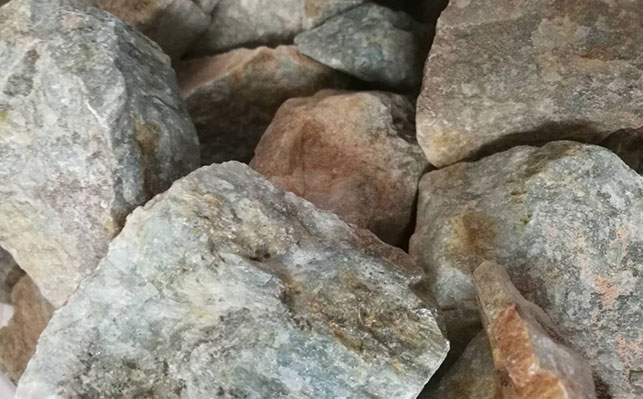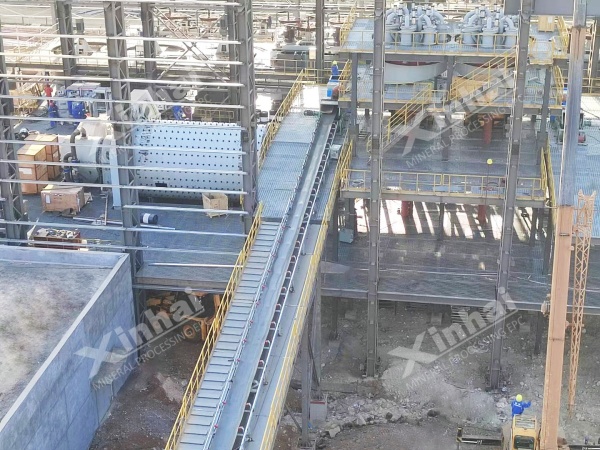If you want to know more information (such as product/process price, etc.), please contact us 24-hour telephone
In the context of white-hot competition in the development of global lithium resources, lepidolite and spodumene as the two mainstream lithium sources, the differentiation of its processing technology selection directly affects the project economics. In this paper, through a systematic comparison of the two major minerals lithium extraction technology path, to provide enterprises with a basis for selection decisions.

1.1 Pre-treatment
Both need to go through three stages of crushing (jaw + cone + high pressure roller mill) to achieve more crushing and less grinding, but spodumene due to the dense crystal structure, need to grind to -0.074mm accounted for more than 80% of the effective dissociation, and lepidolite due to the characteristics of the lamellar structure, the use of vertical mills to protect the grinding to -0.15mm can be obtained to obtain the ideal degree of dissociation.
1.2 Separation system
Spodumene flotation: use “sodium hydroxide + calcium oxide” to adjust the pulp pH to 10-11, with fatty acid type collector to realize efficient separation of spodumene, feldspar and quartz, the grade of Li₂O concentrate can reach more than 6.5%.
Lepidolite flotation: need to add amine cationic recovery agent, through the “one coarse, two fine, three sweep” process design, in the pH 2.5-3.5 acidic environment to realize the separation of mica and quartz, concentrate Li₂O recovery rate of up to 75%.
2.1 Lithium extraction process from spodumene
Sulfuric acid roasting method: 1050 ℃ high-temperature transformation after acid leaching, lithium recovery rate > 90%, but high energy consumption
Sulfate roasting method: introduction of potassium/sodium sulfate to reduce the reaction temperature to 850 ℃, acid consumption by 30%.
The latest trend: dynamic roasting system + waste heat recovery device, the comprehensive energy consumption reduced by 25%
2.2 Lepidolite lithium extraction program
Sulfate roasting: suitable for high grade ore (Li₂O>2.5%), lithium leaching rate up to 92%.
Limestone roasting: the addition of CaO should reach 30% of ore weight, suitable for processing fluorine minerals.
Innovative process: two-stage countercurrent leaching technology, reducing acid consumption by 40%, and simultaneous recovery of rubidium and cesium rare metals.

| Evaluation Dimensions | Spodumene | Lepidolite |
|---|---|---|
| Raw Ore Grade | Li₂O 1.2-2.5% | Li₂O 0.3-1.2% |
| Processing Energy Consumption | 120-150kW-h/t | 180-220kW-h/t |
| Construction Investment | $8000-12000/t Li₂CO₃ | $12000-18000/t Li₂CO₃ |
| Byproduct Value | Feldspar, Quartz Sand | Rubidium, Cesium, Ceramic Raw Material |
| Environmental Protection Requirements | Acid Waste Gas Treatment | Deep Purification of Fluorine Containing Wastewater |
4.1 Spodumene production line: recommend high-pressure roller mill semi-autogenous grinding process, with inflatable flotation machine, energy consumption reduced by 35%.
4.2 Lepidolite production line: configure microwave roasting system, shorten the reaction time by 60%, synchronize with the installation of fluorine recovery device.
4.3 General configuration: ceramic filter instead of traditional vacuum filtration, moisture content reduced to less than 8%.
4.4 As a professional mineral processing EPCM+O service provider, we provide:
a. Mineral process characterization and selectivity test
b. Customized process design (including pilot support)
c. Intelligent beneficiation plant construction (with DCS control system)
d. Supply of special equipment (high pressure roller mill, aerated flotation column, etc.)
Through the overall optimization of the process package, we have helped a lepidolite project in Jiangxi to achieve an increase in lithium recovery rate of 18% and a reduction of 42% in the cost of tonne processing; in the spodumene project in Africa, the innovative application of photoelectricity sorting and pre-throwing waste technology, so as to increase the grade of inclusion by 3.2 times. Choosing suitable processing solutions can maximize the release of resource value.